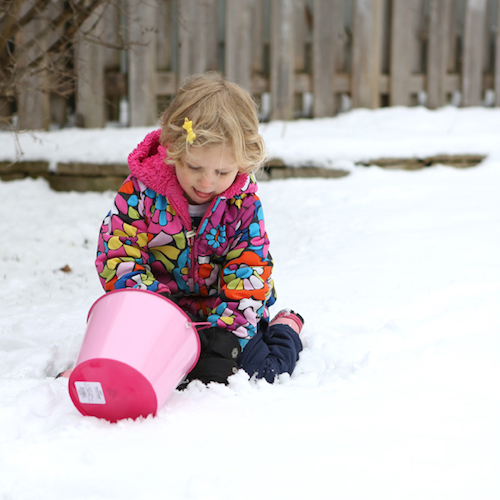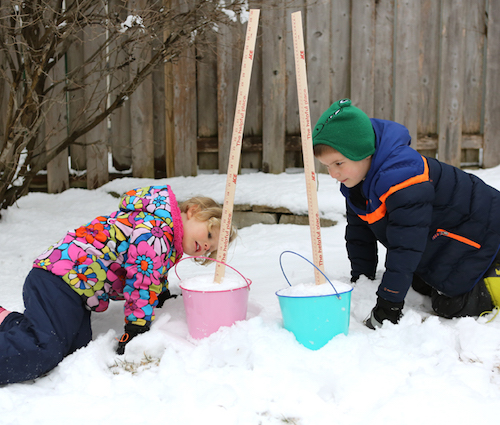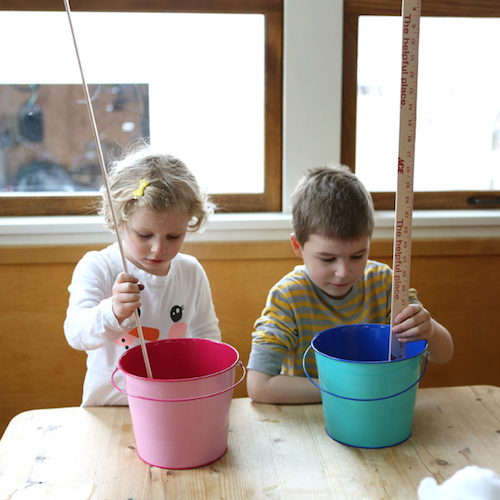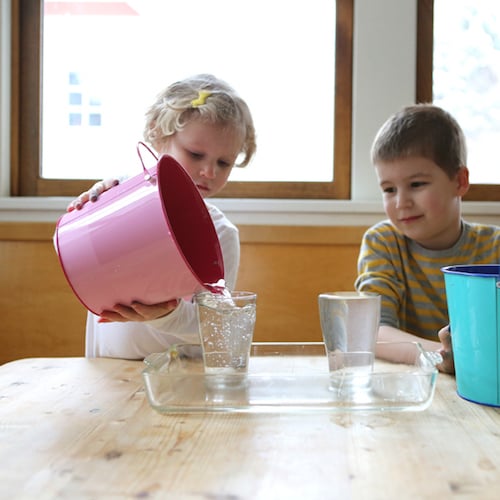Got lots of snow in your yard? Try this simple science activity. Your kiddo will have fun discovering how much water a bucketful of snow holds.
What You'll Need
- one or two buckets or large plastic containers
- snow
- measuring stick or ruler
What to Do

Step 1: Send your child outside to fill a bucket or container with snow. Have them use their hands to level off the snow without packing it down.

Step 2: Let your child use a measuring stick to see how deep the snow in each container is, and record the number in a homemade science notebook or on a piece of paper.
Step 3: Bring the container inside, and wait for the snow to melt. Your child can record how long it takes for all of the snow to turn to water.

Step 4: When the snow has melted, measure how deep the water in the container is and record the depth next to your pre-melt measurements. (Math enrichment: If your child likes math, help them subtract the water depth from the beginning snow depth to find the difference between the two.)

Step 5: Pour some of the water into a clear glass or jar and study it to see how clear it is. Record your observations or take a picture of the water and tape it to your notes.
The Science Behind the Fun
A snow crystal is a single crystal of ice formed when the water in a cloud freezes around a microbe or piece of dust. Some have long, feathery branches, while others are small and flat, but they all have six sides. Snowflakes can contain several snow crystals, stuck together. Sometimes they form large clumps, creating huge, fluffy snowflakes.
The shape of snow crystals, the weather, and the surface where the snow lands all affect how much air is trapped when snow piles up. The amount of air contained in a layer of snow determines much space it takes up.
When snow melts, the snow crystals turn to water and the trapped air is released. That’s why the snow in your bucket is much deeper than the water from the melted snow.
You can find more experiments like this one at kitchenpantryscientist.com, and in my books Kitchen Science Lab for Kids (Quarry Books) and Outdoor Science Lab for Kids (Quarry Books).
© Quarry Books, 2016/Outdoor Science Lab for Kids
Featured Photos Credit: © Amber Procaccini
